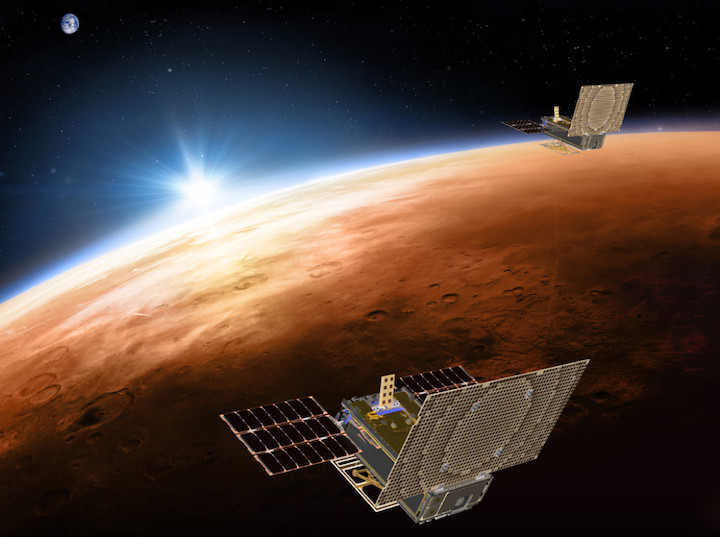7.02.2019

A NASA mission that sent two tiny spacecraft farther out than any like them before appears to have come to an end: Cubesats MarCO-A and B (nicknamed WALL-E and EVE) are no longer communicating from their positions a million and two million miles from Earth, respectively.
The briefcase-sized craft rode shotgun on the Insight Mars Landerlaunch in May, detaching shortly after leaving orbit. Before long they had gone farther than any previous cubesat-sized craft, and after about a million kilometers EVE took a great shot of the Earth receding in its wake (if wake in space were a thing).
They were near Mars when Insight made its descent onto the Red Planet, providing backup observation and connectivity; having done that, their mission was pretty much over. In fact, the team felt that if they made it that far it would already be a major success.
“This mission was always about pushing the limits of miniaturized technology and seeing just how far it could take us,” said the mission’s chief engineer, JPL’s Andy Klesh, in a news release. “We’ve put a stake in the ground. Future CubeSats might go even farther.”
The two craft together cost less than $20 million to make, a tiny fraction of what traditionally sized orbiters and probes cost, and of course their size makes them much easier to launch, as well.
However, in the end these were experimental platforms not designed to last years — or decades, like Voyager 1 and 2. The two craft have ceased communicating with mission control, and although this was expected, the cause is still undetermined:
The mission team has several theories for why they haven’t been able to contact the pair. WALL-E has a leaky thruster. Attitude-control issues could be causing them to wobble and lose the ability to send and receive commands. The brightness sensors that allow the CubeSats to stay pointed at the Sun and recharge their batteries could be another factor. The MarCOs are in orbit around the Sun and will only get farther away as February wears on. The farther they are, the more precisely they need to point their antennas to communicate with Earth.
There’s a slim chance that when WALL-E and EVE’s orbits bring them closer to the sun, they’ll power back on and send a bit more information, and the team will be watching this summer to see if that happens. But it would just be a cherry on top of a cherry at this point.
You can learn more about the MarCO project here, and all the images the craft were able to take and send back are collected here.
Quelle: TC
